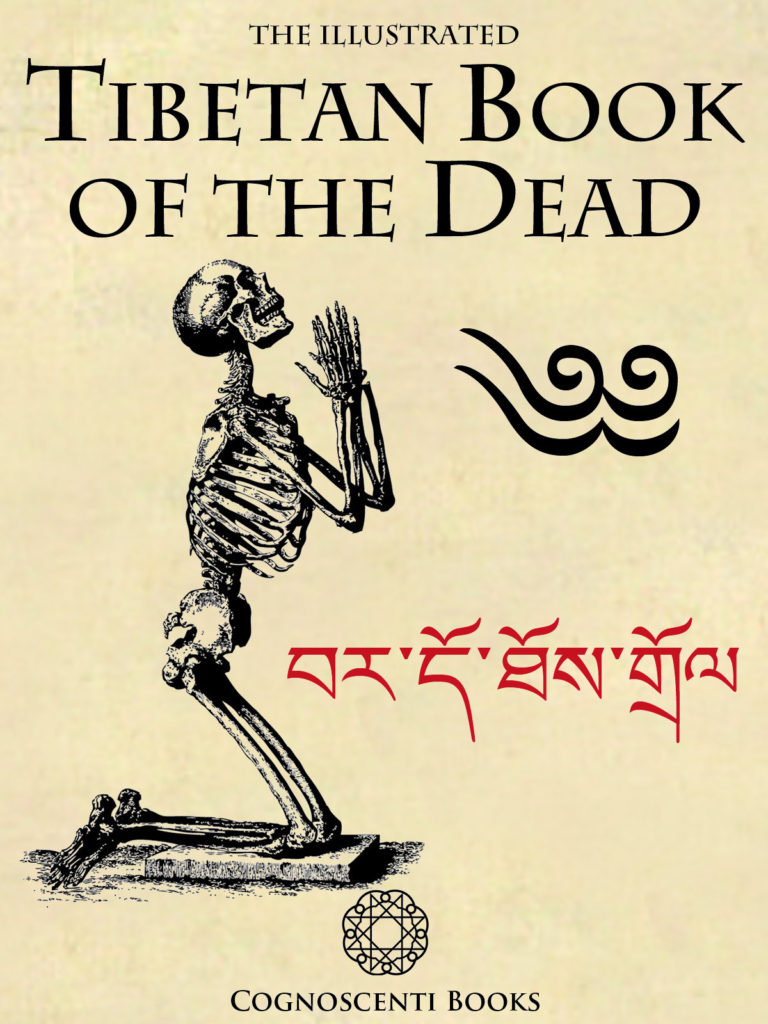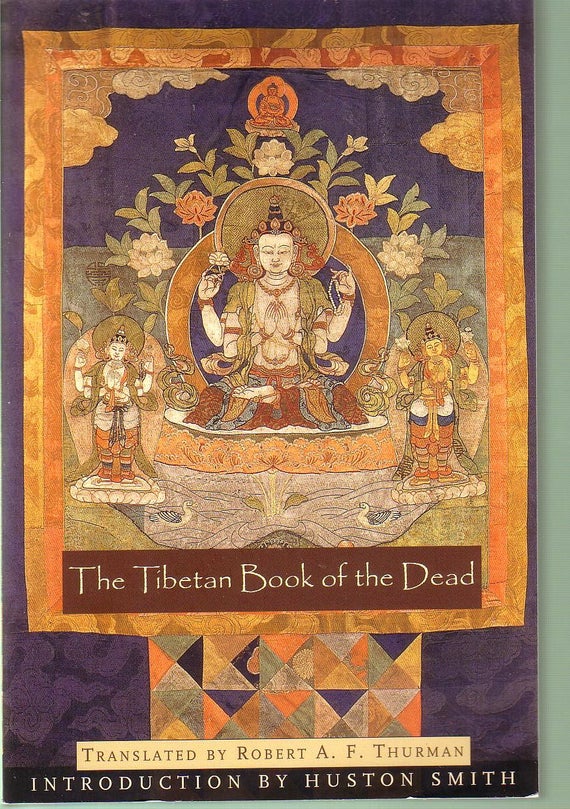The Tibetan Book of the Dead
Or the After-Death Experiences on the Bardo Plane

English translation by Lāma Kazi Dawa-Samdup
Foreword
This book is the first English language translation of the famous Tibetan death text, The Great Liberation upon Hearing in the Intermediate State. Also known as the Bardo Thodol which means “liberation by hearing on the after death plane” (Bardo: after death plane, Thodol or Thotrol: liberation by hearing), it was originally written in the Tibetan language and is meant to be a guide for those who have died as they transition from their former life to a new destination.
The work has been traditionally attributed to Padma-Sambhava, an Indian mystic who was said to have introduced Buddhism to Tibet in the 8th century. Legend has it that while visiting Tibet, Padma- Sambhava found it necessary to conceal sanskrit works he had arranged to be written. The Tibetans of that time were not ready for the spiritual teachings contained therein, so he hid his texts in strange and remote locations, leaving them to be discovered at a later time when their spiritual message could be received by those with an open mind.
The most famous of those that discovered and revealed Padma-Sambhava’s writings was Karma Lingpa who was born around 1350 CE. According to his biography, Karma Lingpa found several hidden texts on top of a mountain in Tibet when he was fifteen years old. Within those texts, he found a collection of teachings entitled The Self-Emergence of the Peaceful and Wrathful Deities from Enlightened Awareness. These teachings contained the texts of the now famous Great Liberation upon Hearing in the Bardo.
The Tibetan Book of the Dead was first published in 1927 by Oxford University Press, London. Dr. Walter Y. Evans-Wentz coined the title because of parallels he found with the writings of the Egyptian Book of the Dead. The paperback and hardcover editions of the book contain extensive notes by Evans- Wentz about the conclusions he drew from the translation which, some say, were greatly influenced by his involvement with Theosophy and neo-Vedantic Hindu views. A later edition of the book includes commentary by the renowned psychoanalyst, Dr. Carl Jung, whose insightful essay illustrates that this Tibetan text goes beyond a study of Tibetan culture and reaches into a psychology that has great relevance to the western world.

The Tibetan Book of the Dead is one of the greatest works to have ever been created by any culture, and it is the most meaningful one in the Buddhist tradition of the West. It is said that book was composed by Padmasambhava, the Indian guru, who introduced Buddhism to Tibet in the eighth century. Like hundreds of his other teachings, the text was supposedly transcribed in a cryptic language and hidden as a sort of “treasure text”, to be discovered in the correct for its transmission. Karma Lingpa, a Terton “seeker of occult teachings”, found it hidden in a Tibetan mountain and, according to legend, he deciphered it in order to be able to orally transmit it to his son. It took several generations for it to finally be transferred onto paper, and it became one of the central teachings within the canon of Tibetan Buddhism.
LEONARD COHEN NARRATES THE HISTORY OF ‘THE TIBETAN BOOK OF THE DEAD’
In this documentary produced by the National Film Board of Canada, Cohen, together with practitioners of Tibetan Buddhism, elucidates what this ancient book does for people who pass away.
The first translation into English appeared in 1927, edited by Walter Evans-Wents, a North American theosopher, who found the text during a trip to India. He decided to call it The Tibetan Book of the Dead. Widely speaking, Bardo Thodol, as it is known in Tibet, is a guide for those who have recently passed away, and it was created to be read while the dead are passing through the intervals of one life to the next.
Narrated by Leonard Cohen himself, the series eloquently shows how after someone’s death in the Tibetan tradition, it takes 49 days for them to pass through the “interval” or “bard”. For that entire time, a Buddhist practitioner —usually a loved one— reads a section of the text every day (repeating these three to seven times) in the most personal room for the deceased, usually their bedroom. The body does not necessarily have to be present, since, according to this philosophy, their mind will constantly be visiting their home, especially the first few days.
Everything is explained with great detail in this two part documentary, made in 1994, which gives us an intimate glimpse at the tradition’s death ceremony. The National Film Board of Canada, that produced the series, made the perfect choice by picking Cohen as the narrator. Not only is his deep voice the one you wish would read these texts out loud when you die, but after narrating this documentary, the musician embarked on a spiritual journey that two years later would lead him to become a monk of the Zen Buddhist.
The Tibetan Book of the Dead has always presented one fundamental problem, which is perfectly resolved in the series: the eagerness to compare it to the Egyptian Book of the Dead, which in the words of the Lama Chögyam Trungpa: “is not based on death as such, but in a completely different concept of death”. It is a “Book about space,” Trungpa points out, “which contains birth and death”. This is why it is such an enormous and transcendental text.
This documentary is definitely worth watching and listening to, especially for those who wish to know more about the Bardo Thodol, and, perhaps more importantly, to think about death consciously again.
